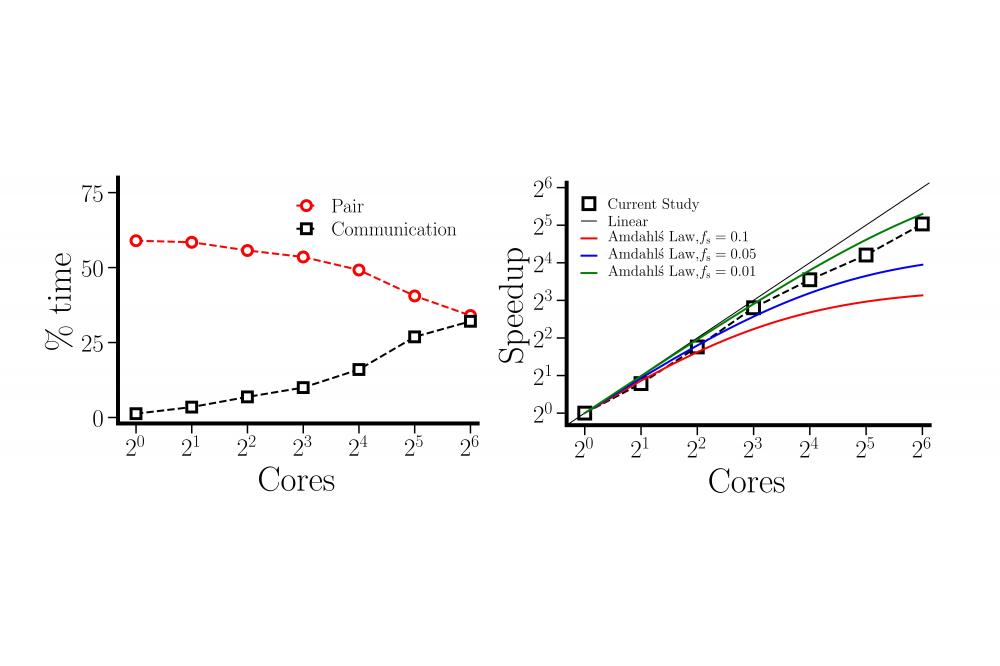Role of Preferential Cosolvent Adsorption in Cononsolvency
Einleitung
Cononsolvency refers to the effect in which a polymer chain in good solvent collapses when it is mixed with an increasing concentration of a second good solvent. Across literature, there have been several experimental theoretical, and computational studies on such systems with a predominant focus on the acrylamide family of polymers in water-alcohol mixtures. However, there is no general consensus on the mechanism (or interplay of mechanisms) driving this phenomenon. Preferential adsorption of the cosolvent on the polymer chain is an important aspect which has been studied in connection with cononsolvency. For acrylamide polymers in water-alcohol mixtures, one observes that cononsolvency is always accompanied by preferential alcohol adsorption. Based on this observation, it has been proposed that polymer collapsein miscible good solvents is a generic phenomenon driven by preferential adsorption. The motivation of this project is to understand whether preferential adsorption is a prerequisite forcononsolvency. For systems which exhibit cononsolvency and preferential adsorption, what are the inter-molecular interactions which drive the latter.
Methoden
Generic coarse-grained (CG) polymer models were used to understand the effect of different bulk (solvent-cosolvent mixture) inter-molecular interactions on cononsolvency and preferential adsorption. Such CG models, though not a good representation of atomistic systems, provide a phenomenological understanding of the role played by different inter-molecular interactions. The models employed in this project consist of a self avoiding polymer chain in an explicit Lennard-Jones liquid mixture. The effects of the following inter-molecular interactionson cononsolvency were studied:
1. Solvent-cosolvent energetic interaction: the model qualitatively capture the behavior forpolar cosolvents such as dimethylsulfoxide (DMSO) which form direct hydrogen bondswith water. The dominant pair interaction is the solvent-cosolvent attraction.
2. Solvent-cosolvent size difference (entropic): the model qualitatively captures the entropic contributions due to solvent-cosolvent size differences in water-alcohol mixtures.
3. Solvent-solvent energetic interaction: the energetic interaction differences in the water-alcohol mixtures are qualitatively captured in this model. The dominant pair interactionis the solvent-solvent attraction.
Ergebnisse
Our work shows that cononsolvency can occur with and without the preferential adsorption ofthe cosolvent. This shows that a universality of non-specific attraction between monomers and cosolvent is not sufficient to explain the cononsolvency phenomenon. The solvent-cosolventenergetic model shows cononsolvency with preferential depletion of the cosolvent. This modelqualitatively captures the cononsolvency behavior of Poly(N-isopropylacrylamide) (PNIPAM) solutions with polar cosolvents such as DMSO where water-DMSO pair attractions are dominant. The entropic and solvent-solvent energetic models exhibit cononsolvency accompaniedby preferential adsorption. Further, they are able to reproduce the dependence of the polymerchemical potential on cosolvent concentration as observed in atomistic simulations of PNIPAM in water-methanol mixtures. These results show that preferential adsorption is dependent on the interplay between the direct polymer-solvent (cosolvent) pair interactions and the solventmediated interactions. We hope that this work paves the way for development of theoretical models which incorporate both direct energetic and solvent mediated interactions, which will lead to a better understanding of the underlying microscopic mechanism.





